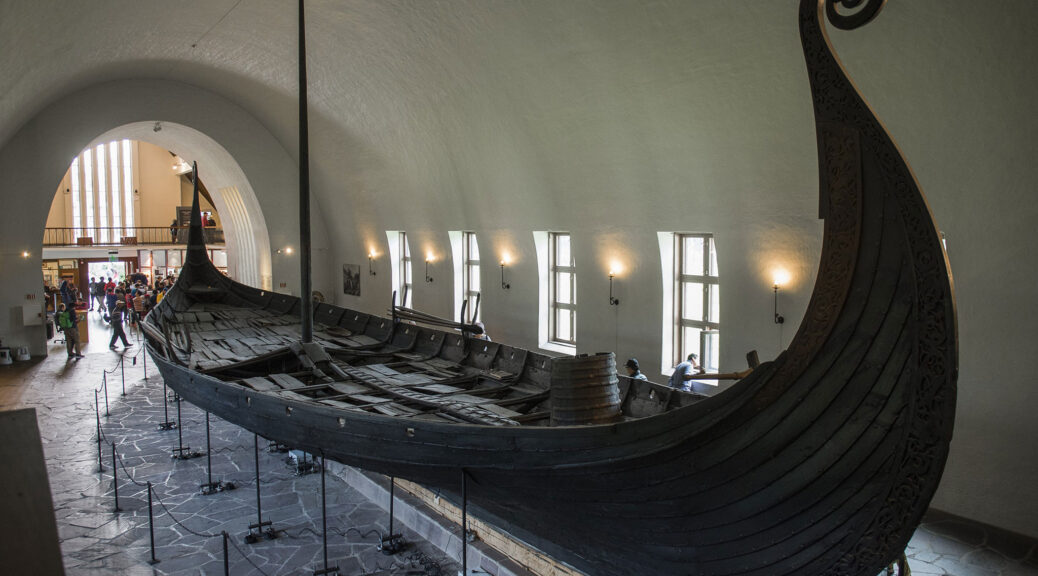Second Viking Ship Burial Detected on Norway’s Edoya Island
The georadar study completed on Edoya Island off the coast of Western Norway revelated a second burial of the Viking ship, according to Archaeology Org. Oslo, Norway.

On the tiny island, the ship burial was discovered known as the Edoya ship. Manuel Gabler of the Norwegian Institute for Cultural Heritage Research (NIKU) said the data indicates an object about 24 feet long and three feet wide had been placed inside a circular structure thought to be a round stone cairn.
Introducing Edøya
Never heard of Edøya? That’s not a big surprise, for the island is just 7.5km2 (2.9 square miles) in size. Yet this tiny island in Møre og Romsdal county was an important centre of power in the Viking Age.
Along with its larger island neighbours Smøla, Ertvågsøya and Tustna, Edøya is now sure to come under the spotlight like never before.
A second Viking boat grave
The georadar data clearly shows a second boat burial. Manuel Gabler from the Norwegian Institute for Cultural Heritage Research (NIKU) explains:

“In the process of interpreting the data, we discovered a clear circular and reflective structure. In the middle of that structure, we see a 7.3 metre long and approximately 1-meter wide anomaly. “We interpret it as a boat tomb under a round stone cairn.”
Although the grave is considerably smaller than the first find, it can’t be described as small. NIKU’s Knut Paasche, who was a guest on the Life in Norway Show recently, explains:
“If a 7.3-metre long anomaly represents the bottom of a boat and the upper board aisles have rotted away, the original boat will have been a few metres longer. It’s likely to have needed four pairs of oars.”
Burial mounds and remains of houses
In the report, archaeologists revealed more of Edøya’s secrets. North of the boat grave, another round anomaly appears albeit without a boat structure. The team believes this fragmented anomaly is where a burial mound has been ploughed over.
Around 50 metres further north, the georadar data revealed traces of two more graves, measuring 11 and 19 metres in diameter. Two more anomalies to the north-west of the boat grave appear to be remains of houses.

“We see a curved, rectangular structure of approximately 12 by 5.9 metres. In the central part of the house is a large reflective anomaly, which may be the remains of a floor or hearth,” said Gabler. There are other round anomalies nearby that together form a rectangular structure.
County conservator Bjørn Ringstad believes the houses and boat graves could well come from different time periods: “The houses that have been traced may well be from the older Iron Age, circa 300-600 AD. The tombs may be from the younger Iron Age, circa 600-900 AD. The findings nevertheless show that there was a close connection between the residences and the burial ground at Edøy.”
Similar to a previous find in Møre og Romsdal
According to the experts, the boat is likely more than 1,000 years old. “This is probably a somewhat similar boat tomb from the Viking Age, from the 900s to the one found in Surnadal in 1994,” said Ringstad.

The grave was excavated the following year by archaeologists from NTNU in Trondheim and Møre og Romsdal county. Within the boat’s imprint, the team found fine weaponry including swords, spears, and arrows. The new find at Edøya is about the same size.
Edøya: A Viking Age powerhouse?
The discoveries strengthen the belief that Edøya was a centre of power during the Viking Age.
“Ship burial finds still belong to the rarities of Norwegian archaeology. In general, ship burials are reserved for the top layer in society, so the ship grave at Edøy is a clear proof of a local power elite,” added Paasche. He believes the house remains are not large enough to have been part of the chieftain’s seat, but could still represent parts of a larger farm structure.
The full report (only available in Norwegian) is available for download from NIKU here. Based on the results of the project, further archaeological investigations in and around the region are likely.
